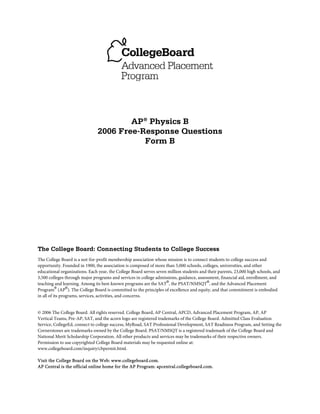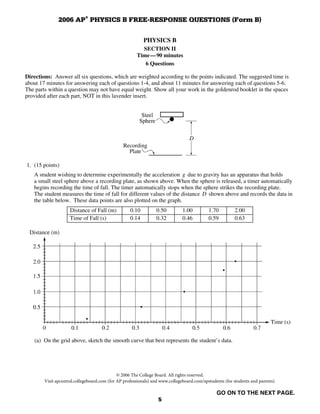The document provides:
1) An introduction to the College Board, outlining its mission to connect students to college success and the programs and services it offers.
2) Copyright information and permissions for use of College Board materials.
3) The table of contents for the 2006 AP Physics B Free-Response Questions, including the questions, constants and conversion factors, equations, and diagrams to be used for the exam.










